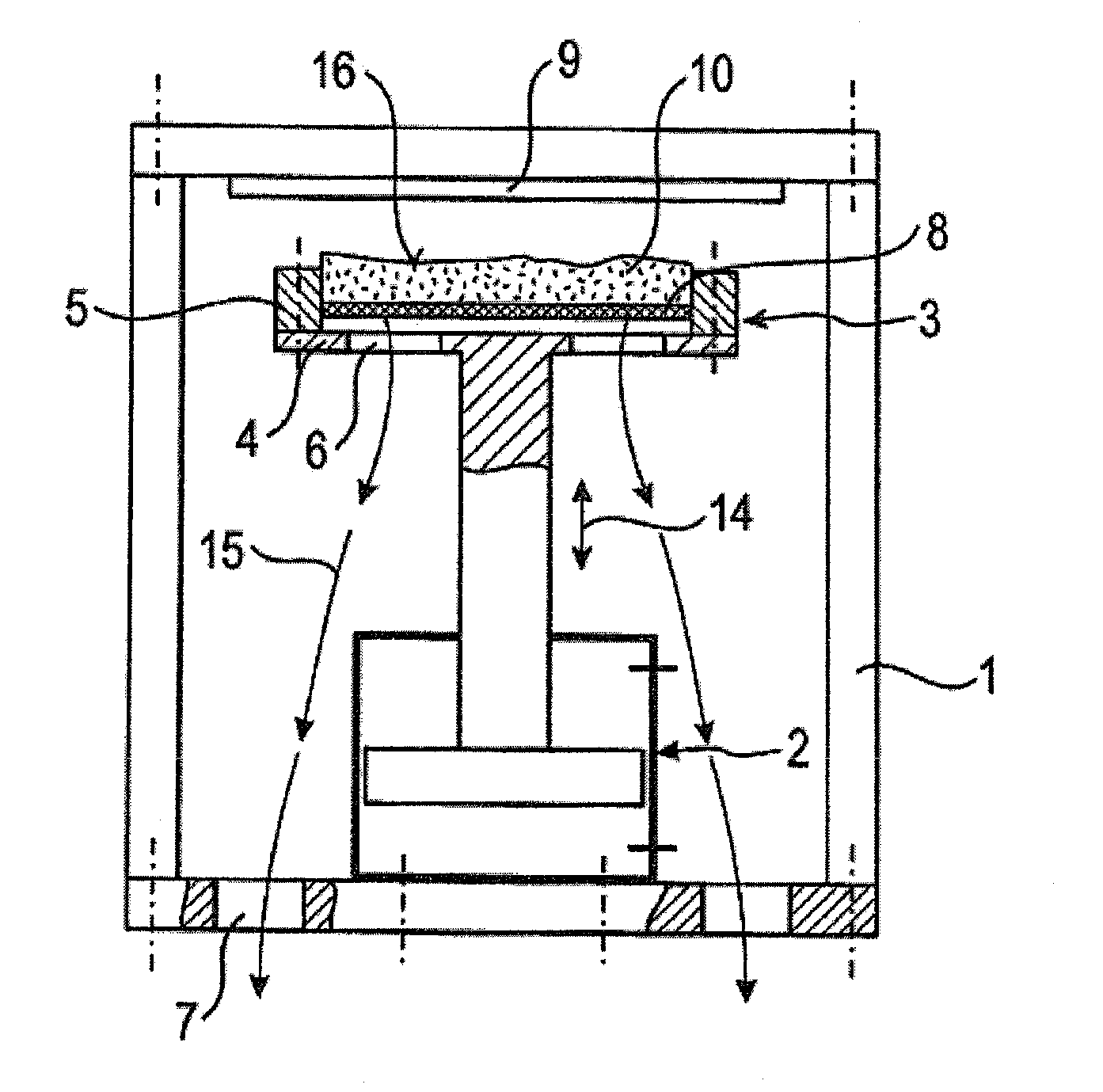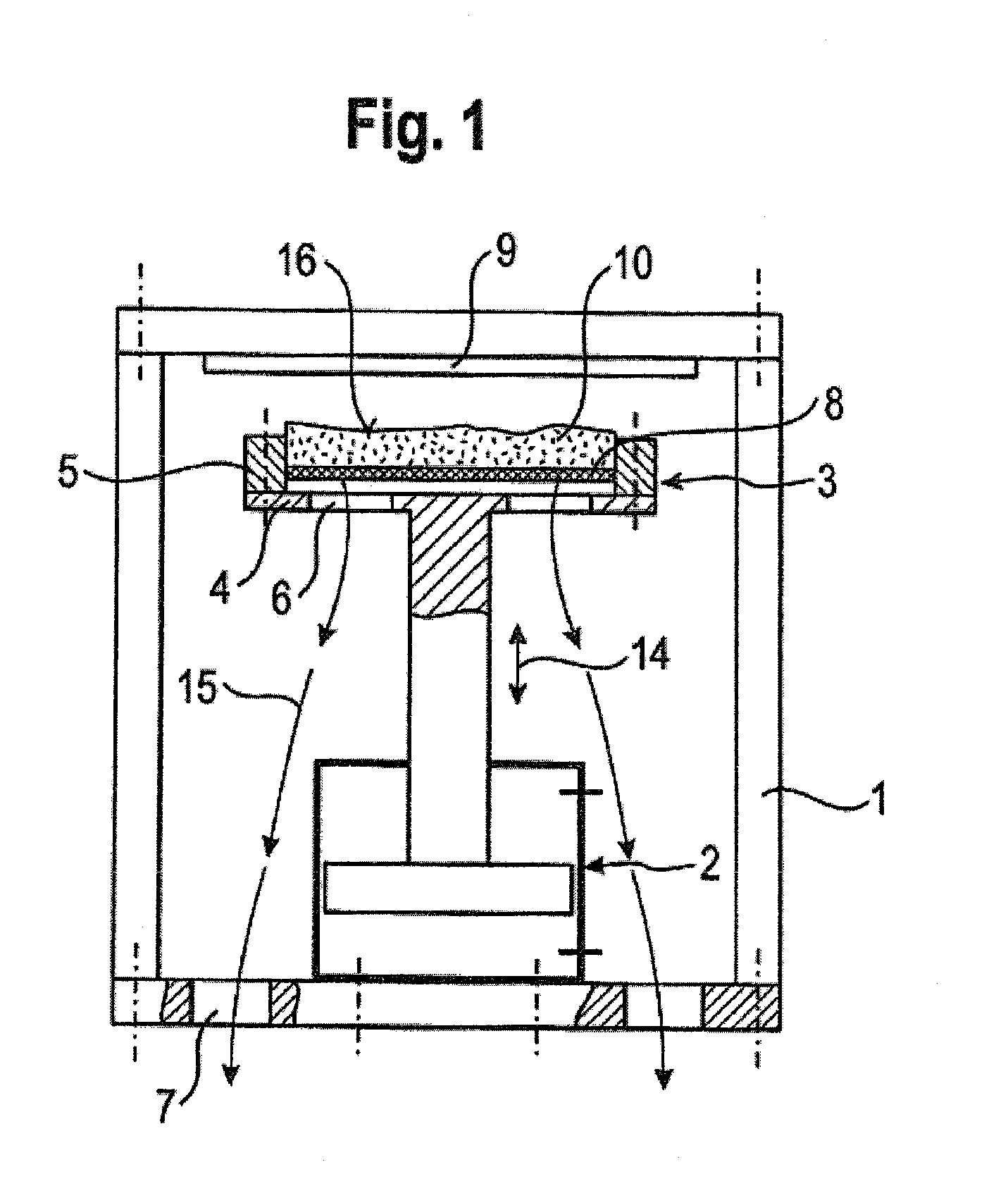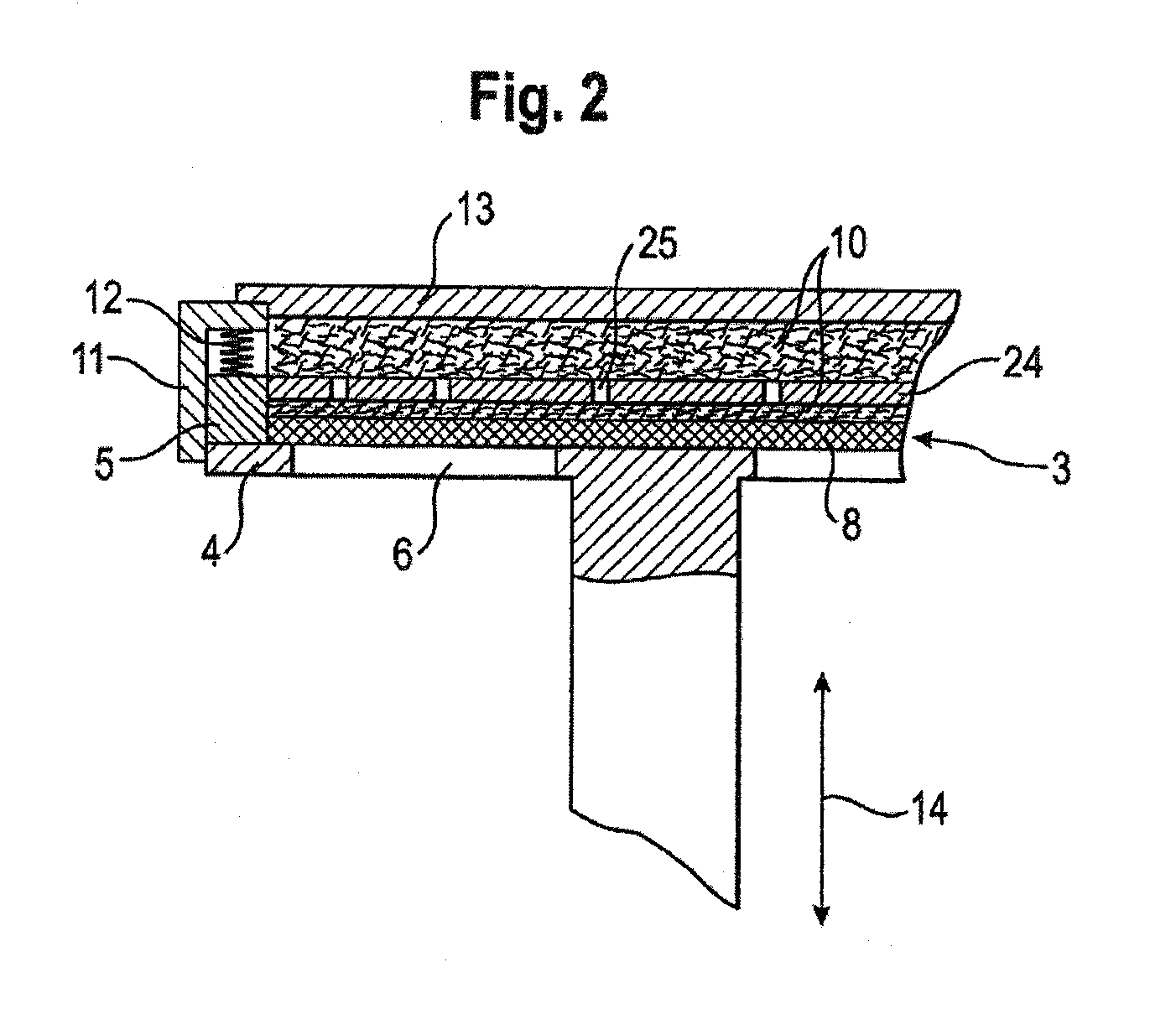Method for separating grinding oil from grinding slurry; separating station for carrying out said method and plant according to said method
a technology of grinding oil and slurry, which is applied in the direction of gravity filter, sediment separation, loose filtering material filter, etc., to achieve the effect of reducing the thickness of the layer, reducing the amount of slurry, and good heat utilization
- Summary
- Abstract
- Description
- Claims
- Application Information
AI Technical Summary
Benefits of technology
Problems solved by technology
Method used
Image
Examples
first embodiment
[0025]In FIG. 1, a separating station is represented. Arranged here in a frame 1 is a lifting device 2, which is indicated in the form of an adjusting piston with a solid piston rod that is suitable as a supporting column. The lifting device serves the purpose of moving a carrier bowl 3 upward and downward, cf. the directional arrow 14 for the lifting movement. The carrier bowl comprises a flat plate 4 with a rising-up rim 5, surrounding the flat plate 4, and has a circular cross section. The flat plate 14 is provided with openings 6, through which separated grinding oil can flow off, cf. the directional arrow 15 for the flow-off direction. The base of the frame 1 is also provided with openings 7 for the same purpose.
[0026]Arranged at a distance above the flat plate 4 of the carrier bowl 3 is a permeable intermediate base 8. It may be formed as a screen base or in the form of a perforated plate. The through-flow openings of the intermediate base 8 are small in relation to the openi...
third embodiment
[0049]In the case of the third embodiment according to FIGS. 6 and 7, the endless conveyor is formed as a circular conveyor 51. In FIG. 6, which corresponds to a section B-B through FIG. 7, the principle is only shown schematically. The circular conveyor 51 has the form of a flat circular disk that is rotatable about its center axis 63, that is to say forms a carousel. The direction of rotation of the circular conveyor 51 is identified by the directional arrow 52. On the circular conveyor 51 there are three circular carrier bowls 53 for receiving and treating divided layers of grinding slurry 54, cf. FIG. 7. The way in which they operate is the same in principle as in the case of the separating station already described, with the belt conveyor which is moved cyclically in a linear direction. Each of the three carrier bowls 53 passes one after the other through the treatment units of a) loading and spreading, b) inductively heating and c) unloading.
[0050]FIG. 7, which corresponds to ...
PUM
| Property | Measurement | Unit |
|---|---|---|
| thickness | aaaaa | aaaaa |
| thick | aaaaa | aaaaa |
| temperature | aaaaa | aaaaa |
Abstract
Description
Claims
Application Information
 Login to View More
Login to View More - R&D
- Intellectual Property
- Life Sciences
- Materials
- Tech Scout
- Unparalleled Data Quality
- Higher Quality Content
- 60% Fewer Hallucinations
Browse by: Latest US Patents, China's latest patents, Technical Efficacy Thesaurus, Application Domain, Technology Topic, Popular Technical Reports.
© 2025 PatSnap. All rights reserved.Legal|Privacy policy|Modern Slavery Act Transparency Statement|Sitemap|About US| Contact US: help@patsnap.com



